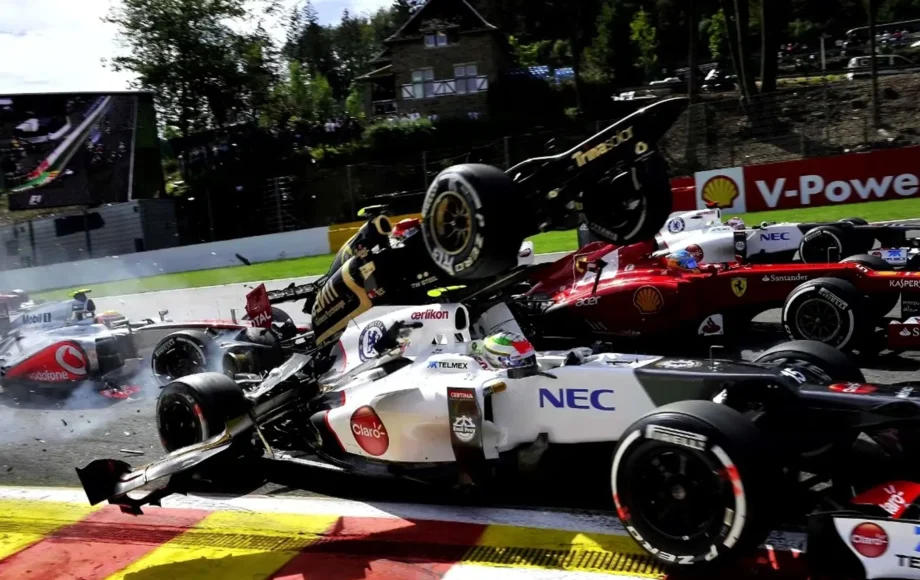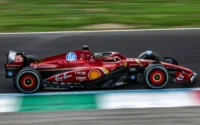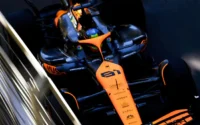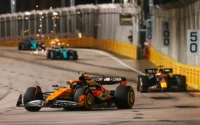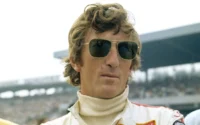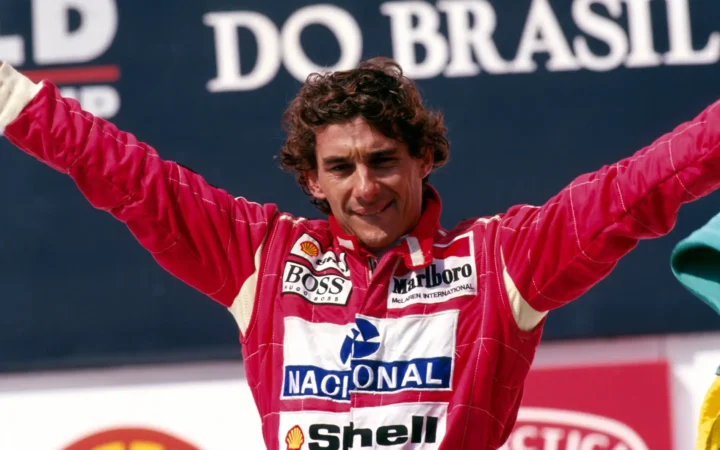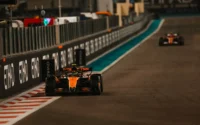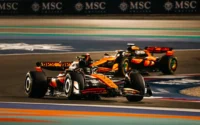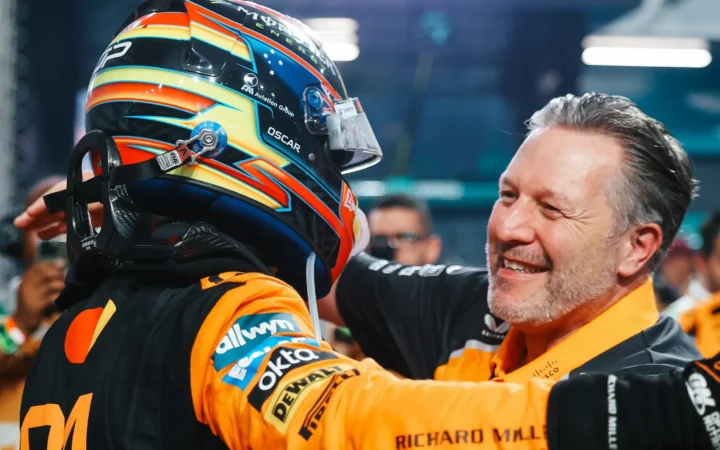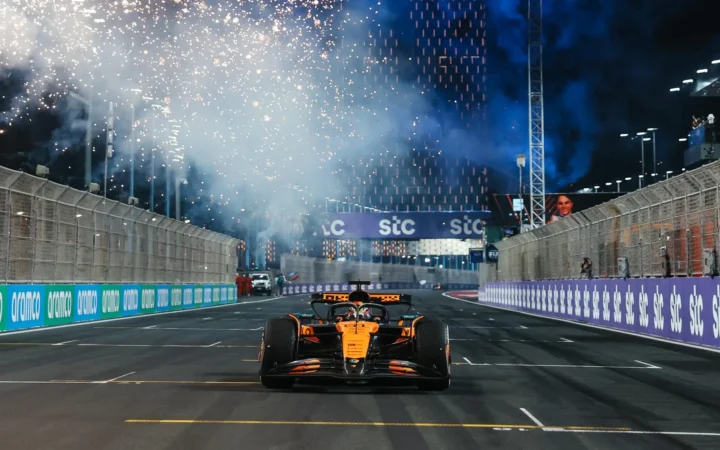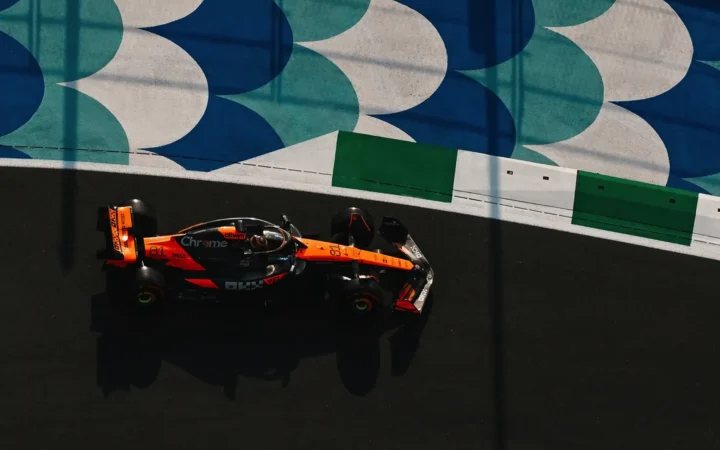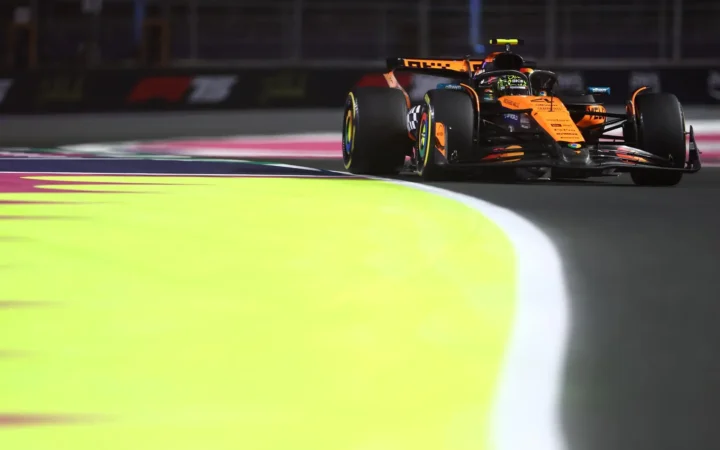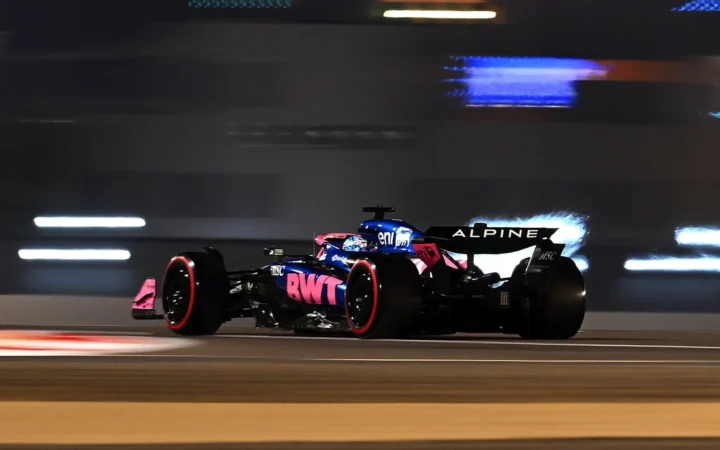Dubious overtakes, multi-car collisions, and even reversing in the pitlane—Formula 1 has seen it all. But when the FIA drops the hammer with a full race ban, you know something serious has gone down. In a sport where controversy and chaos are often just part of the show, a ban is still one of the rarest and most severe penalties a driver can face.
What To Know
- Rare but serious: F1 race bans are uncommon and often handed out only for severe rule breaches, unsafe driving, or repeated offences.
- Cases covered: We look at each ban (and one technical withdrawal) involving drivers like Schumacher, Villeneuve, Grosjean, and Magnussen. With one driver even being sentenced to jail.
- Controversy & consequences: Many bans sparked debate—some were appealed, while others shaped the careers of future champions.
- From 1978 to 2024: Spanning over four decades, these bans reveal how the FIA’s handling of them has evolved from driver-led protests to points-based systems.
That’s exactly what happened in September 2024, when Kevin Magnussen became the first driver to receive a race ban under the current penalty points system, which was introduced back in 2014. The Haas driver was sidelined for the 2024 Azerbaijan Grand Prix after racking up 12 penalty points within a 12-month period—triggered by a lock-up and collision with Pierre Gasly at the 2024 Italian Grand Prix. Although Gasly himself called the penalty harsh and voiced support for Magnussen, the decision stood. Rookie Oliver Bearman stepped in for Baku, while Magnussen served his time on the sidelines.
Despite his return for the 2024 Singapore Grand Prix on September 22, the incident reignited debate across the paddock about whether the penalty system was too harsh—or just harsh enough. At the time, George Russell, director of the Grand Prix Drivers’ Association, publicly supported the outcome, drawing a parallel to red cards in football and noting how rare bans have been in F1 History: “I can only think of one in 20 years,” Russell said. “It’s part of the game.”
Full Race Report
Which F1 drivers have received a race ban?
So, what does it really take to get banned in F1? With multiple levels of punishment available—from time penalties and fines to disqualifications and grid drops—a race ban is genuinely the last resort. As we revisit the most controversial driver bans in Formula 1 history, Magnussen’s name now joins an exclusive and unwanted club that even the sport’s fiercest competitors would rather avoid.
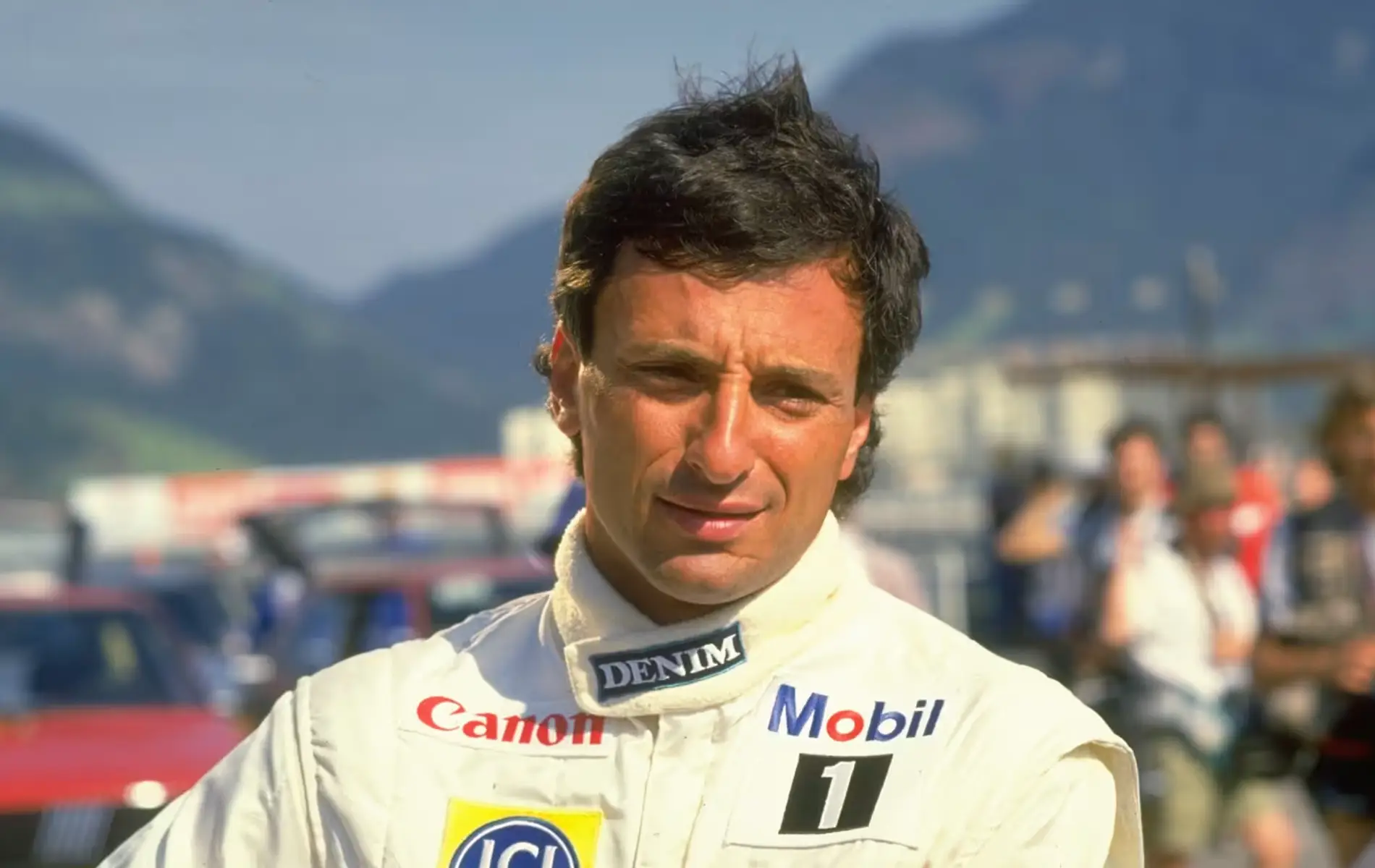
Riccardo Patrese: 1978 Italian Grand Prix
- Ban Type: 1-race ban (driver-led boycott)
- Reason: Blamed for deadly crash at Italian GP involving Ronnie Peterson
- Details: Drivers threatened to withdraw unless he was banned
- Withdrawal: Removed by team from 1978 U.S. GP after pressure
Long before safety cars and sensor-packed chassis, Formula 1 in the late 1970s was raw, dangerous, and sometimes ruled by the drivers themselves. In the aftermath of a horrifying crash at the 1978 Italian Grand Prix, 24-year-old Riccardo Patrese found himself at the center of one of the sport’s most dramatic controversies—accused by his peers of triggering a tragedy that would ultimately lead to a rare, driver-enforced race ban.
Patrese, driving for Arrows, was already gaining a reputation for his aggressive style. At Monza, that style came to a breaking point. As the field surged off the line, Patrese attempted a bold move on James Hunt, rejoining the track and forcing contact that spiraled into chaos. Hunt’s McLaren clipped the Lotus of Ronnie Peterson, which was then launched into the barriers and caught fire. Seven other cars were collected in the wreck. Peterson was pulled from the burning car by fellow drivers, suffering 27 fractures in his legs—but despite surviving the initial impact, he died the next day from an embolism, after bone marrow entering his bloodstream led to his untimely death.
Formula One History Recommends
The fallout was immediate and deeply personal. Ahead of the next round, the 1978 United States Grand Prix, Bernie Ecclestone informed Patrese that a group of drivers—Hunt, Lauda, Andretti, Fittipaldi, and Scheckter among them—would boycott the event unless he was banned. The pressure worked. The organisers excluded Patrese from the Grand Prix, despite legal objections from Arrows. Even a last-minute appeal to a local judge couldn’t overturn the decision.
It was an unprecedented show of power from the drivers, and a stark reminder of how F1 once policed itself from within. While Patrese went on to become a mainstay of the sport, racing into the early ’90s and earning veteran status, the events of Monza ’78 left a permanent mark—not only on his career, but on the sport’s ongoing evolution in safety, responsibility, and accountability on the grid.
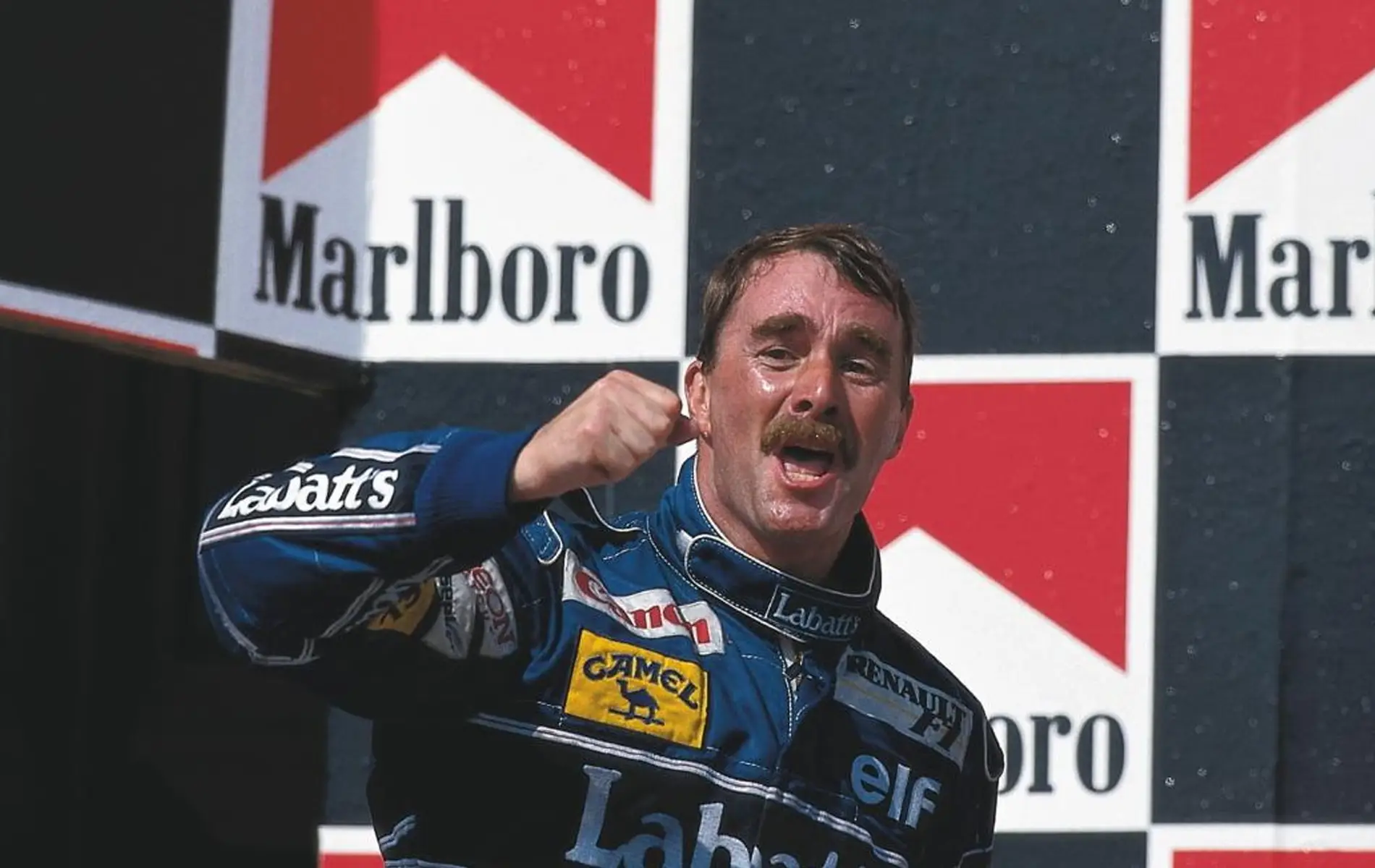
Nigel Mansell: 1989 Portuguese Grand Prix
- Ban Type: 1-race ban
- Reason: Ignored black flag at Portuguese GP after reversing in pitlane
- Details: Later collided with Ayrton Senna, taking both out
- Missed Race: 1989 Spanish GP
Known for his fearless driving and never-say-die attitude, Nigel Mansell built a career on pushing the limits. But at the 1989 Portuguese Grand Prix, “Il Leone” pushed a little too far. What began as a routine pit stop spiraled into chaos, ending in a high-profile crash with Ayrton Senna and one of the most famous black flag incidents in F1 history.
Mansell, leading the race in his Ferrari, came in for tyres on lap 40 after building a commanding gap over teammate Gerhard Berger. But in his urgency, he overshot his pit box by a full car length. Instead of looping around, he threw the car into reverse—a direct breach of FIA regulations. The black flag was shown, meaning immediate disqualification. But Mansell, caught up in a fierce battle with Senna and claiming he couldn’t see the signal or hear his team, kept going. Moments later, he lunged into Turn 1 and collided with the McLaren, taking both cars out of the race.
The FIA’s reaction was swift and unsparing. Reversing in the pitlane was bad enough, but ignoring a black flag and eliminating a championship contender? That was grounds for serious action. Mansell was fined ,000 and handed a one-race suspension, forcing Ferrari to run only one car at the next round in Jerez, the 1989 Spanish Grand Prix. His actions lit up headlines, raised eyebrows in the paddock, and prompted serious conversations about discipline and visibility in F1.
Though Mansell would become World Champion just a few years later, the Estoril incident is one of the most dramatic examples of how quickly a dominant race can unravel. It also remains one of the clearest demonstrations of the black flag’s weight—rare, final, and unforgiving, even for one of the sport’s greats.
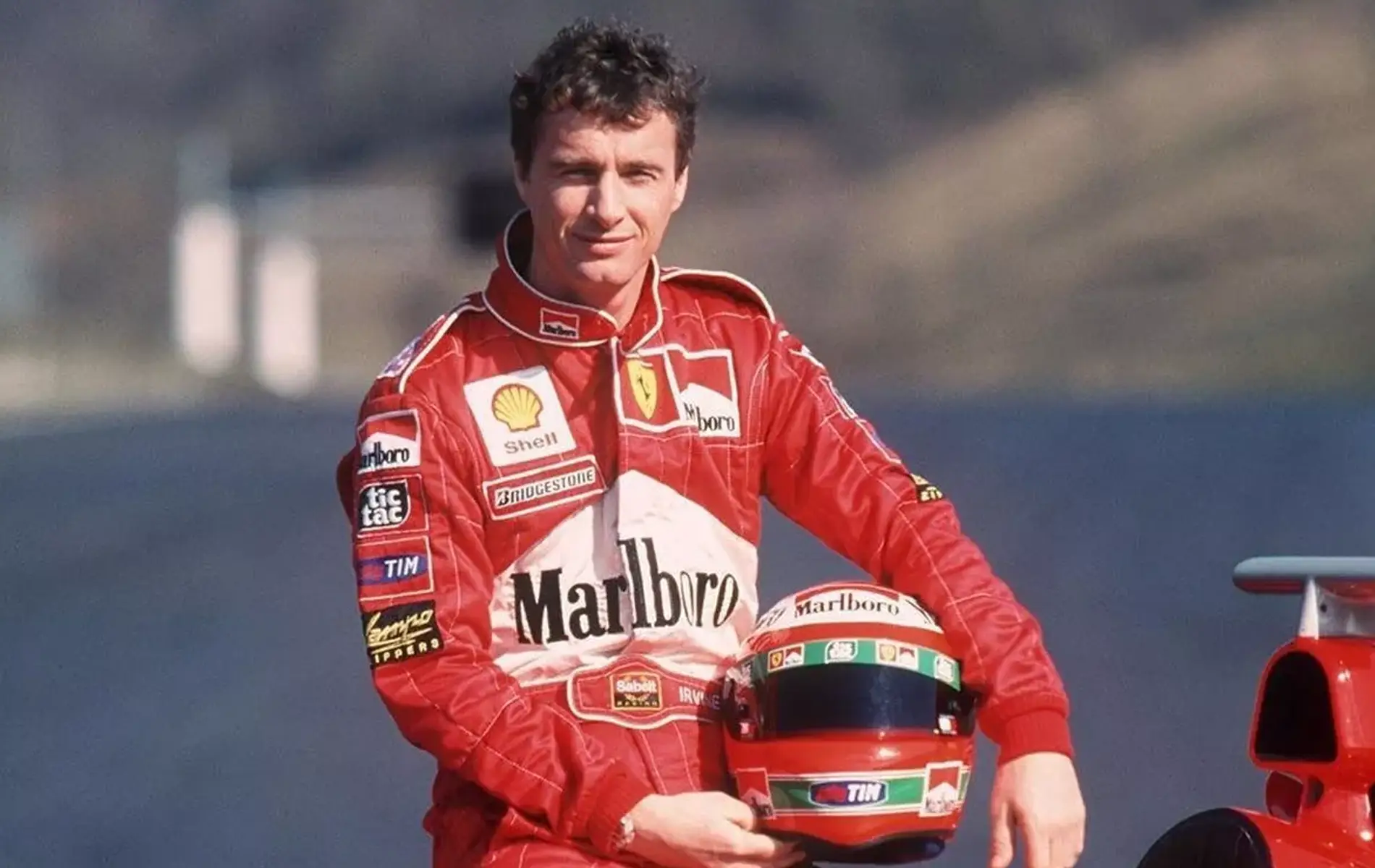
Eddie Irvine: 1994 Pacific, San Marino & Monaco Grands Prix
- Ban Type: 3-race ban
- Reason: Caused 4-car crash in Brazil
- Details: Originally given 1-race ban, but increased to 3 after failed appeal
- Replacements: Aguri Suzuki (1994 Pacific GP), Andrea de Cesaris (1994 San Marino, Monaco)
Before he was dicing for titles with Ferrari, Eddie Irvine’s early F1 career hit a massive roadblock—one that saw him benched for not just one but three races in his fourth start. The year was 1994, and with safety concerns escalating and emotions running high across the paddock, the FIA came down hard on the young Irishman after a spectacular four-car crash at the 1994 Brazilian Grand Prix.
The incident unfolded on lap 35 at Interlagos. With Martin Brundle’s McLaren losing power, Irvine swerved in his Jordan to avoid the slowing car. In doing so, he forced Jos Verstappen onto the grass. Verstappen lost control, bounced back onto the track, clipped Brundle, then launched over Eric Bernard’s Ligier in a jaw-dropping, full 360° airborne roll. Miraculously, no one was injured—but the FIA laid the blame squarely at Irvine’s feet. He was fined $10,000 and handed a one-race ban.
Confident that the collision was a racing incident caused by unavoidable circumstances, Eddie Jordan appealed the decision. That move backfired spectacularly. Not only did the FIA uphold the original penalty, they tripled it—issuing a three-race ban in what was clearly meant as a message to teams challenging stewards’ calls. The appeal was rejected, the punishment extended, and Irvine’s seat rotated through Aguri Suzuki, Andrea de Cesaris, and a rapidly changing 1994 grid.
Irvine, never one to shy away from a quote, later suggested politics and previous battles influenced the penalty. But regardless of the motives, the result stood. It was one of the harshest driver bans of the modern era, and a defining early moment in Irvine’s career—one that made it clear the FIA was not afraid to wield the ban hammer when chaos unfolded on track.
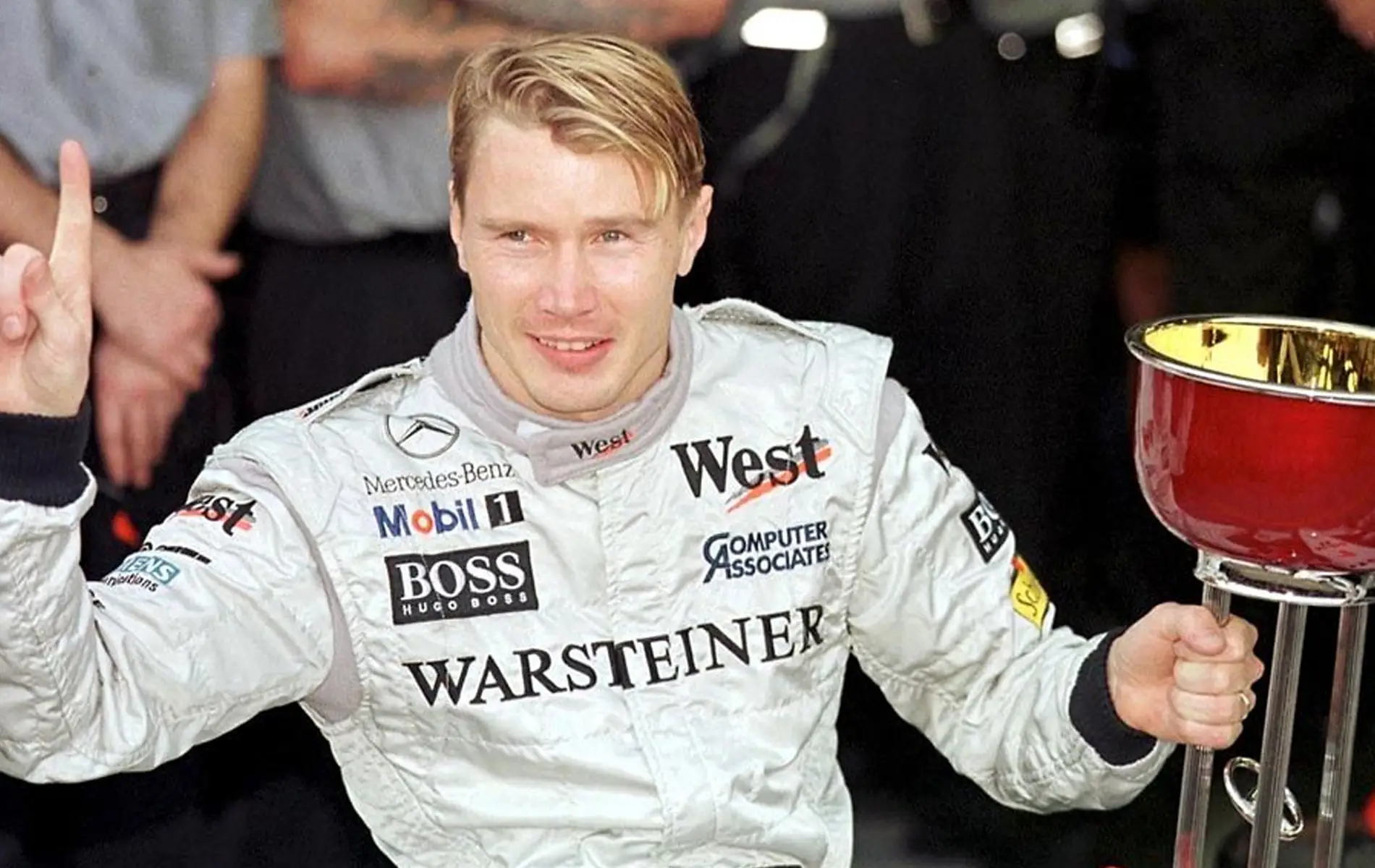
Mika Hakkinen: 1994 British Grand Prix
- Ban Type: 1-race ban (triggered suspended penalty)
- Reason: Caused multi-car crash at start of 1994 German GP
- Background: Had a suspended ban from previous incident with Barrichello at 1994 British GP
Before he became a two-time world champion and one of Michael Schumacher’s fiercest rivals, Mika Häkkinen endured a turbulent early F1 career—marked by flashes of brilliance and a few too many collisions. In 1994, the Finn found himself at the center of one such incident, collecting a one-race ban that highlighted a season of growing pains and frustration behind the wheel of a struggling McLaren.
The trouble started at the 1994 British Grand Prix, where Häkkinen and Rubens Barrichello collided on the final lap in a scrap for position. The FIA handed both drivers a suspended one-race ban, effectively putting them on probation for three events. But just one race later, at Hockenheim, Häkkinen triggered chaos before the 1994 German Grand Prix had even reached Turn 1. In a mistimed move off the start, he collided with David Coulthard’s Williams, lost control, and spun across the field—taking multiple drivers with him.
The chain-reaction crash led to a staggering 11 retirements on the opening lap, 10 of which happened before the first corner. Häkkinen’s penalty was immediately activated, forcing him to sit out the following race. Unlike some other teams at the time, McLaren accepted the FIA’s decision without appeal, and the Finn owned the mistake, quietly serving his ban as the team regrouped.
While that season was one to forget—riddled with six DNFs and little reward—it proved to be part of Häkkinen’s longer journey toward the top. The chaos at Hockenheim might have briefly stalled his rise, but it also served as a hard lesson in racecraft, risk, and the razor-thin margin between ambition and overreach in Formula 1.
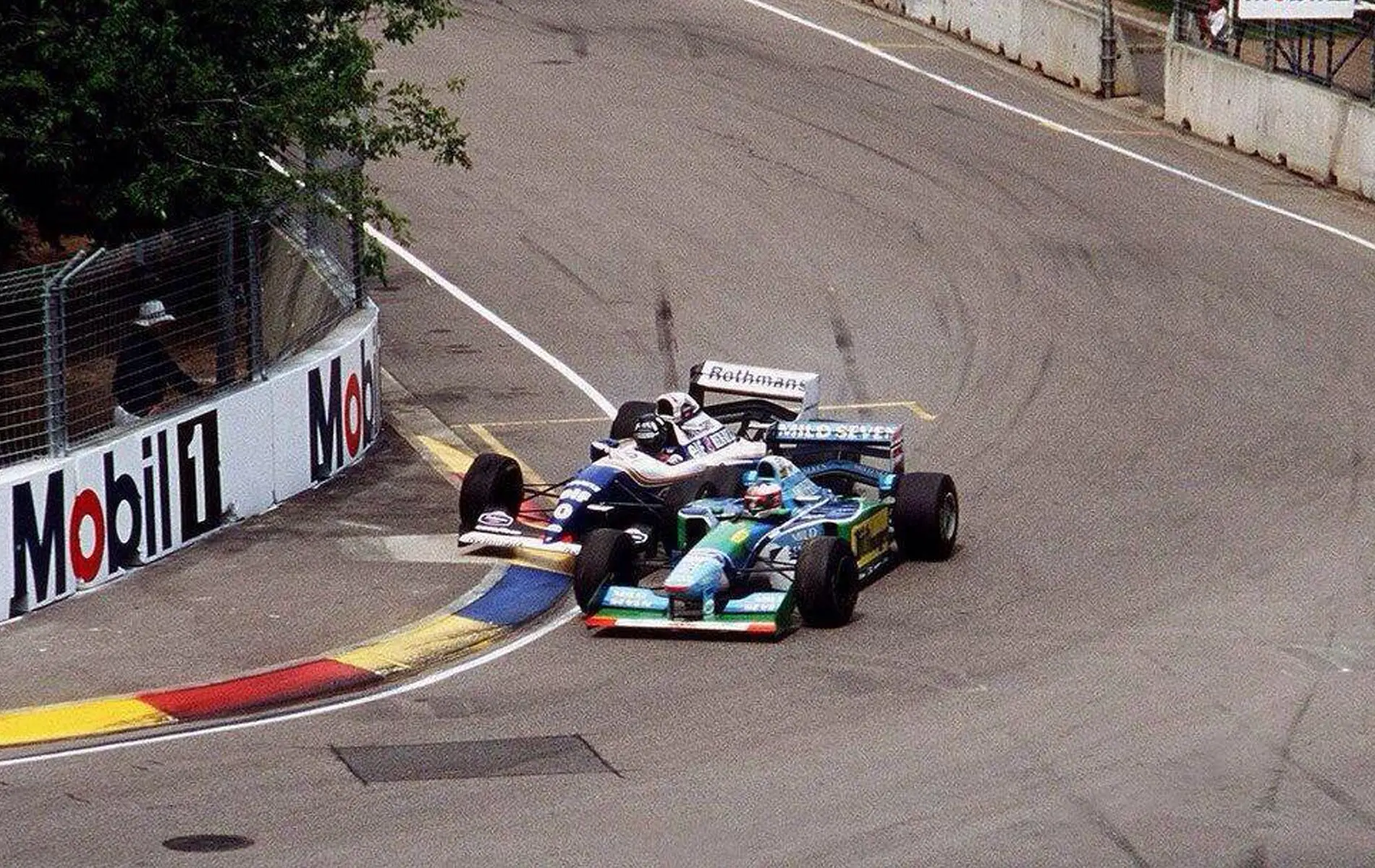
Michael Schumacher: 1994 Italian and Portuguese Grands Prix
- Ban Type: 2-race ban
- Reason: Ignored black flag at 1994 British GP after formation lap overtake
- Details: Continued to race while appeal pending; later upheld after 1994 Belgian GP
- Missed Races: 1994 Italian and Portuguese GPs
Even legends have their missteps—and in Michael Schumacher’s case, one of the biggest came in the midst of his breakout 1994 season. On his way to his first World Championship, the young German’s relentless drive and Benetton’s aggressive strategy collided with the rulebook at Silverstone, resulting in a rare two-race ban that temporarily halted his title charge.
It all began at the 1994 British Grand Prix, when Schumacher overtook Damon Hill during the formation lap—a violation that, under the 1994 rules, should’ve dropped him to the back of the grid. But confusion reigned: race officials didn’t apply that penalty, and after a second false start, Schumacher repeated the offence. He was eventually given a five-second stop-go penalty on lap 13—but Benetton, believing the instructions were unclear, told him to stay out and prepare to appeal. The situation escalated quickly. After seven laps without serving the penalty, Schumacher was shown the black flag—a direct order to pit and retire. He ignored it.
Benetton continued negotiating with race control mid-race, and eventually, Schumacher served the five-second stop-go and rejoined. But the FIA wasn’t having it. Ignoring a black flag is one of the gravest offences in Formula 1, and the governing body made an example of the rising star. Schumacher was disqualified from the British GP, and after a delayed hearing—due to another ongoing protest at the Belgian GP, where his car failed a skid block test—the FIA handed down a two-race suspension. He would miss both the Italian and Portuguese Grands Prix.
While the incident was one of the most chaotic and controversial of the ’94 season, it did little to derail Schumacher’s eventual championship win. If anything, it reinforced the idea that his dominance came not just from raw speed, but from a ruthless win-at-all-costs mentality. The Silverstone saga remains one of the few times the FIA put the brakes on a Schumacher title charge—and one of the rare moments where even the most clinical driver of a generation crossed a line too far.
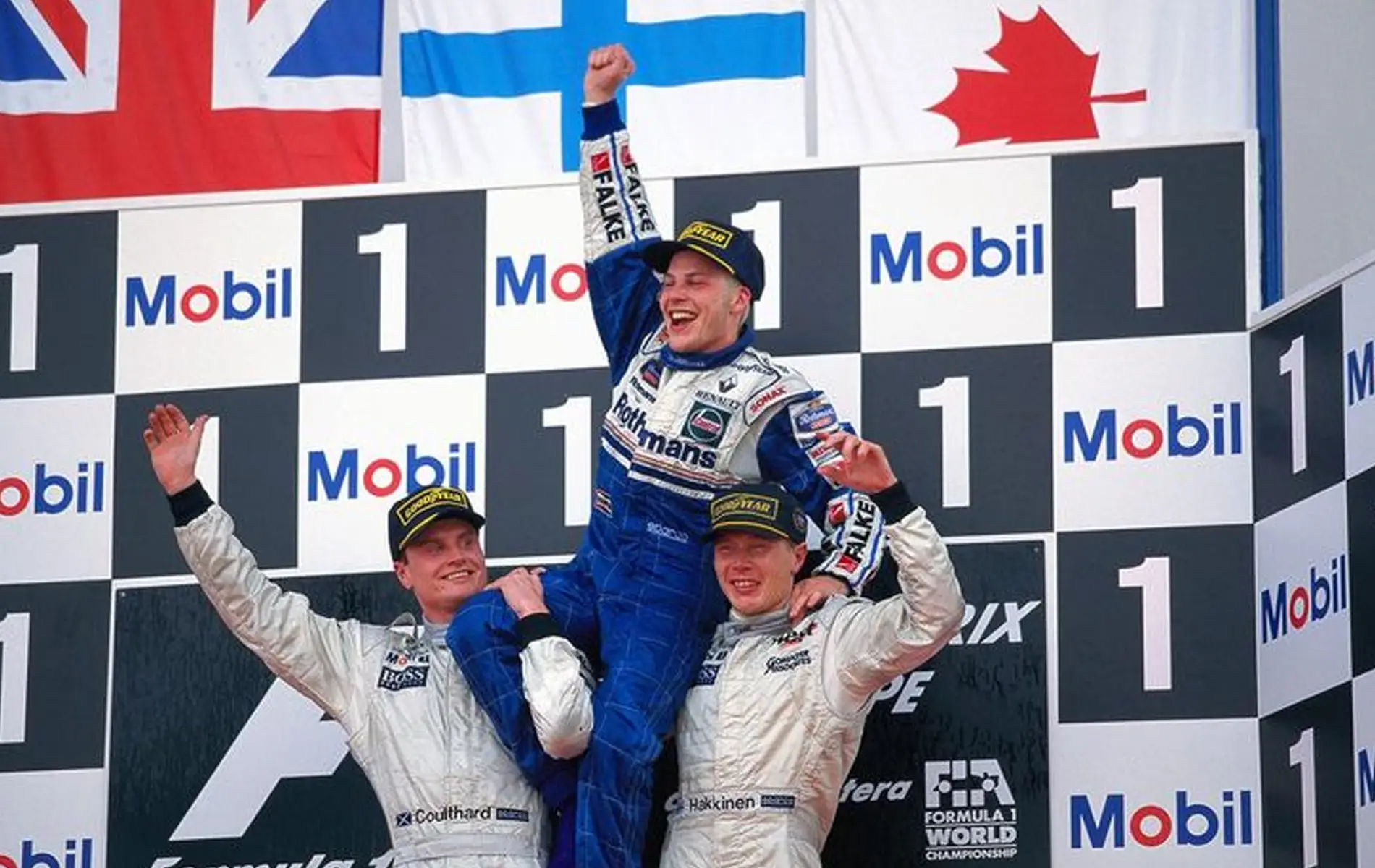
Jacques Villeneuve: 1997 Japanese Grand Prix
- Ban Type: 1-race ban (delayed disqualification)
- Reason: Ignored yellow flags in practice at 1997 Japanese GP
- Details: Raced under appeal, finished 5th, later disqualified and points erased
Even potential world champions aren’t above the rules, and in 1997, Jacques Villeneuve came dangerously close to losing the title because of a race ban—despite having one hand already on the trophy. Heading into the penultimate round at Suzuka, the Canadian led Michael Schumacher by nine points and needed only a minor result to clinch the championship. But a split-second decision in practice threw everything into chaos.
During Saturday’s session at the 1997 Japanese Grand Prix, Villeneuve was one of six drivers who failed to slow under yellow flags at the Spoon Curve, where Jos Verstappen’s Tyrrell had come to a stop. While others, including Schumacher and Rubens Barrichello, received suspended one-race bans, Villeneuve’s history came back to bite him. Having already committed similar offences three times that season, his suspended ban was activated—meaning he was officially excluded from the upcoming race.
Williams quickly appealed the decision, buying Villeneuve a temporary lifeline. With no time to arrange a hearing before Sunday’s Grand Prix, the FIA allowed him to race pending the outcome. Starting from pole, Villeneuve finished fifth and collected two crucial points. But just over a week later, the FIA upheld the original punishment. Williams withdrew the appeal, and Villeneuve was disqualified from the results, losing the points he’d earned.
Though he ultimately sealed the championship in the next round at Jerez—with one of the most dramatic title-deciding showdowns in F1 history—the ban at Suzuka served as a major warning shot. In a season where consistency was key, even the smallest infraction could carry enormous consequences. Villeneuve may have escaped with the title, but his brush with disqualification made it clear: not even topping the standings protects you from the FIA.
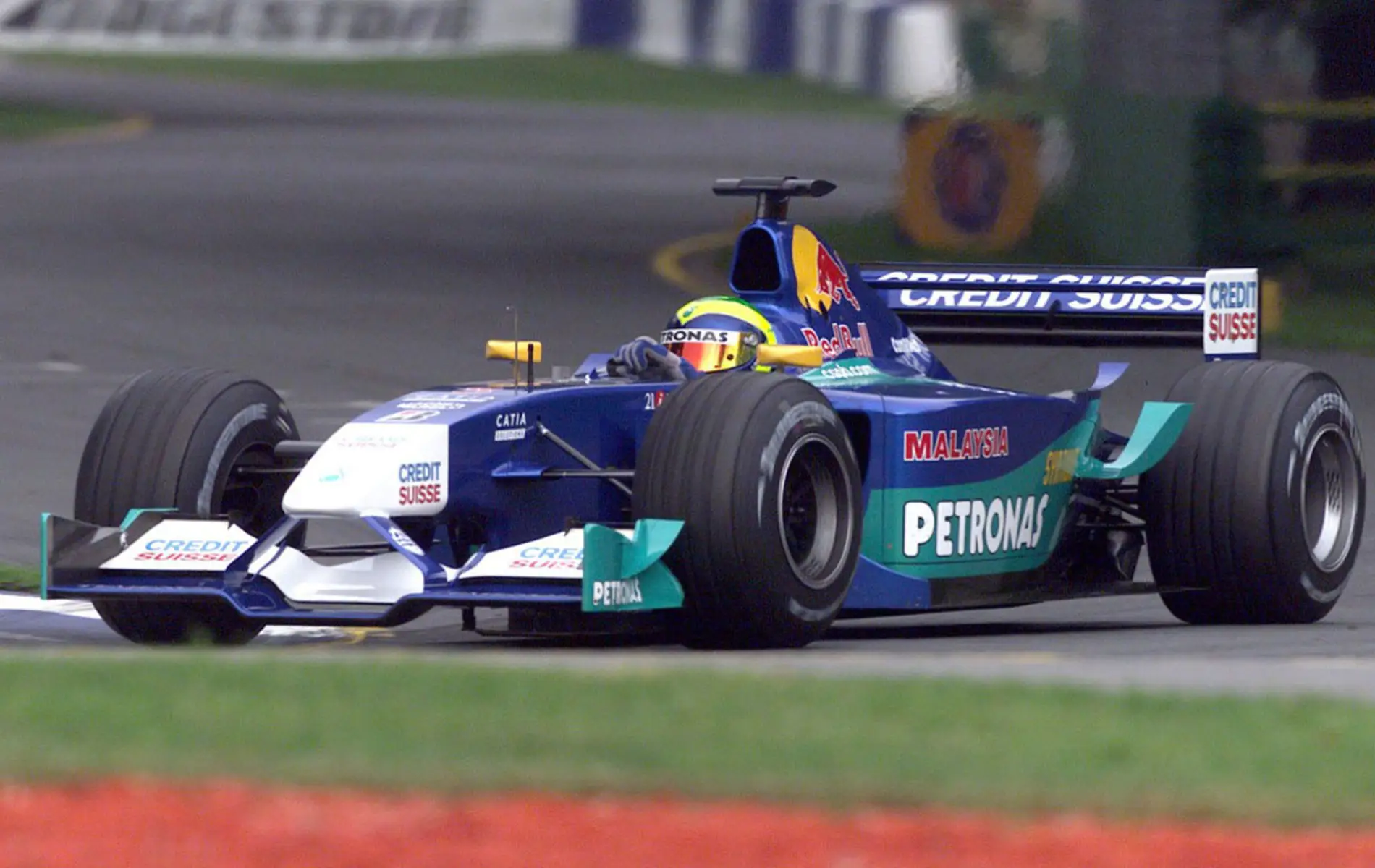
Felipe Massa: 2002 Italian Grand Prix
- Ban Type: Technical withdrawal (not an official ban)
- Reason: Sauber avoided 10-place grid penalty by benching him for 2002 U.S. GP
- Details: Caused crash at Monza; replaced by Heinz-Harald Frentzen
Not every race absence comes from a dramatic crash or fiery controversy—sometimes, it’s just a loophole in the rulebook. Felipe Massa missing the 2002 United States Grand Prix wasn’t a traditional race ban, but it effectively acted as one. The Brazilian rookie was sidelined by his team due to a technicality in the regulations after being hit with the first-ever 10-place grid penalty in Formula 1 history.
It all began at the 2002 Italian Grand Prix in Monza, where Massa tangled with Pedro de la Rosa’s Jaguar. Both drivers were forced to retire, and after a stewards’ investigation, Massa was deemed responsible for the collision. In response, the FIA handed him a 10-place grid drop for “the next race”—a wording that proved to be crucial in what came next.
At the time, regulations stated that penalties had to be served at the “next” Grand Prix on the calendar, not necessarily the next one the penalised driver competed in. Sauber saw an opportunity: by pulling Massa from the upcoming 2002 United States Grand Prix at Indianapolis, they could avoid serving the penalty altogether. Instead, they brought in veteran Heinz-Harald Frentzen—set to join the team the following year—to take the seat, aiming to score vital points in their tight constructors’ battle with Jaguar.
While not officially a race ban, Massa’s sidelining created waves in the paddock. It raised eyebrows around sporting fairness and loopholes in regulation wording, and prompted a re-examination of how penalties should be enforced. For Massa, it was a curious blip in an otherwise promising rookie campaign—and a rare instance where F1 politics, not pace or penalties, kept a driver off the grid.
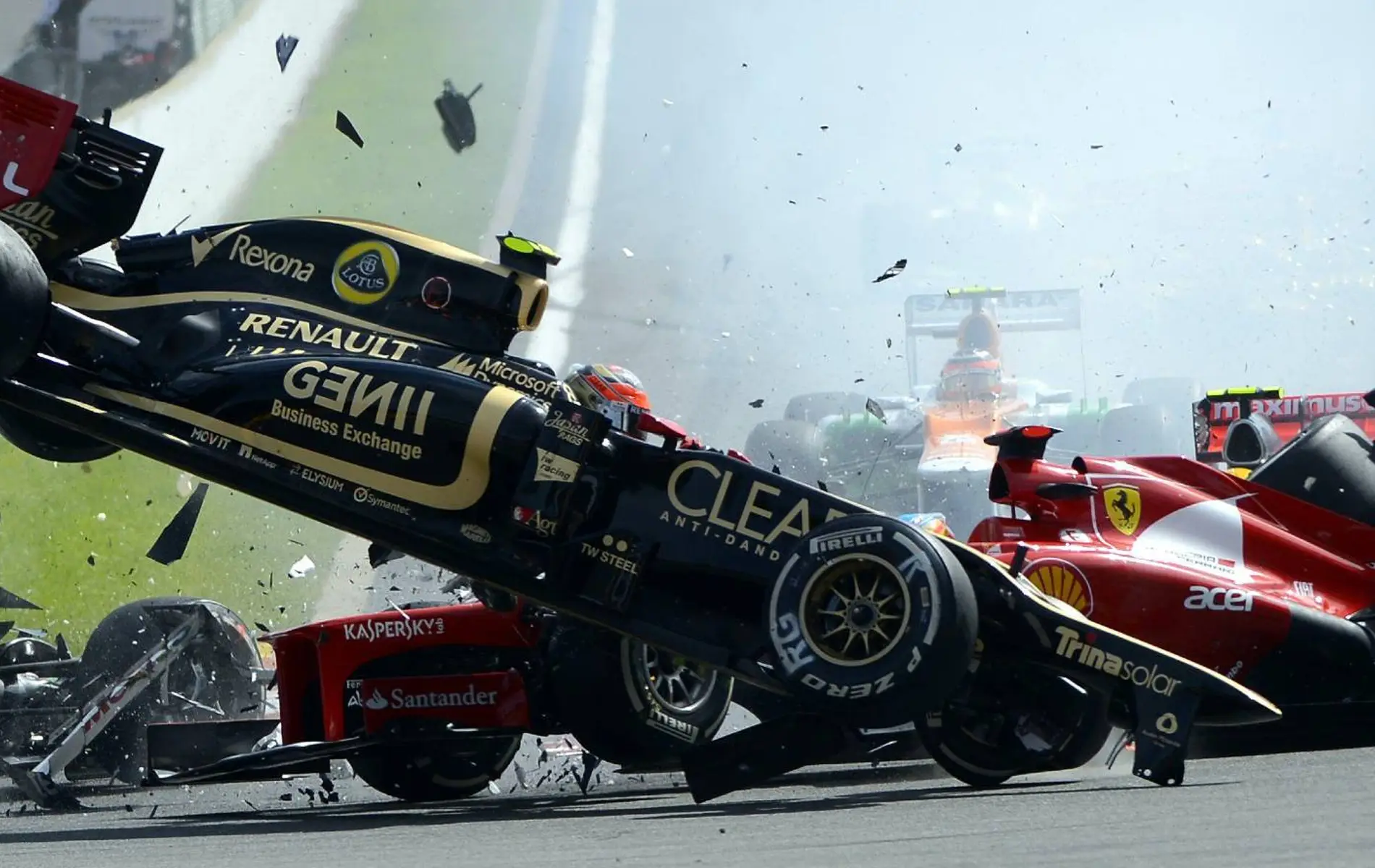
Romain Grosjean: 2012 Belgian Grand Prix
- Ban Type: 1-race ban
- Reason: Caused major first-lap crash at 2012 Belgian GP (Spa), taking out Alonso, Hamilton & others
- Details: Fined €50,000; first ban issued since 1994
- Replacement: Jérôme d’Ambrosio at 2012 Italian GP
Long before Haas teammates Romain Grosjean and Kevin Magnussen both found themselves banned from racing, the Frenchman etched his name into the F1 record books with one of the most infamous first-lap crashes of the modern era. The 2012 Belgian Grand Prix at Spa-Francorchamps exploded into chaos just seconds after lights out—and Grosjean was held squarely responsible.
Charging toward La Source on the opening lap, Grosjean aggressively moved across the front of Lewis Hamilton’s McLaren, forcing the Brit onto the grass. The pair collided, sparking a domino effect that wiped out Fernando Alonso’s Ferrari, both Saubers of Sergio Pérez and Kamui Kobayashi, and spun Pastor Maldonado’s Williams. The Lotus was launched into the air, sailing terrifyingly close over the cockpit of Alonso in what could have been a far worse outcome. Incredibly, no one was injured.
The stewards came down hard. Citing the elimination of key championship contenders—Alonso, then leading the standings, and Hamilton, sitting fourth—as well as the sheer scale and danger of the crash, Grosjean was handed a one-race ban and a €50,000 fine. The ruling stated the incident was “an extremely serious breach of the regulations,” and the Lotus team didn’t contest it. Reserve driver Jérôme d’Ambrosio was brought in for the 2012 Italian Grand Prix at Monza the following week.
Grosjean admitted fault, calling it a “misjudgement” and expressing remorse for the incident, but the damage was done—both to his reputation and his season. It was the first race ban issued in F1 since 1994, and it served as a loud reminder that even minor miscalculations at turn one can have massive consequences. For a driver already developing a reputation for clumsy starts—seven first-lap incidents in the first 12 races—the Spa crash became the defining moment of a season he’d rather forget.
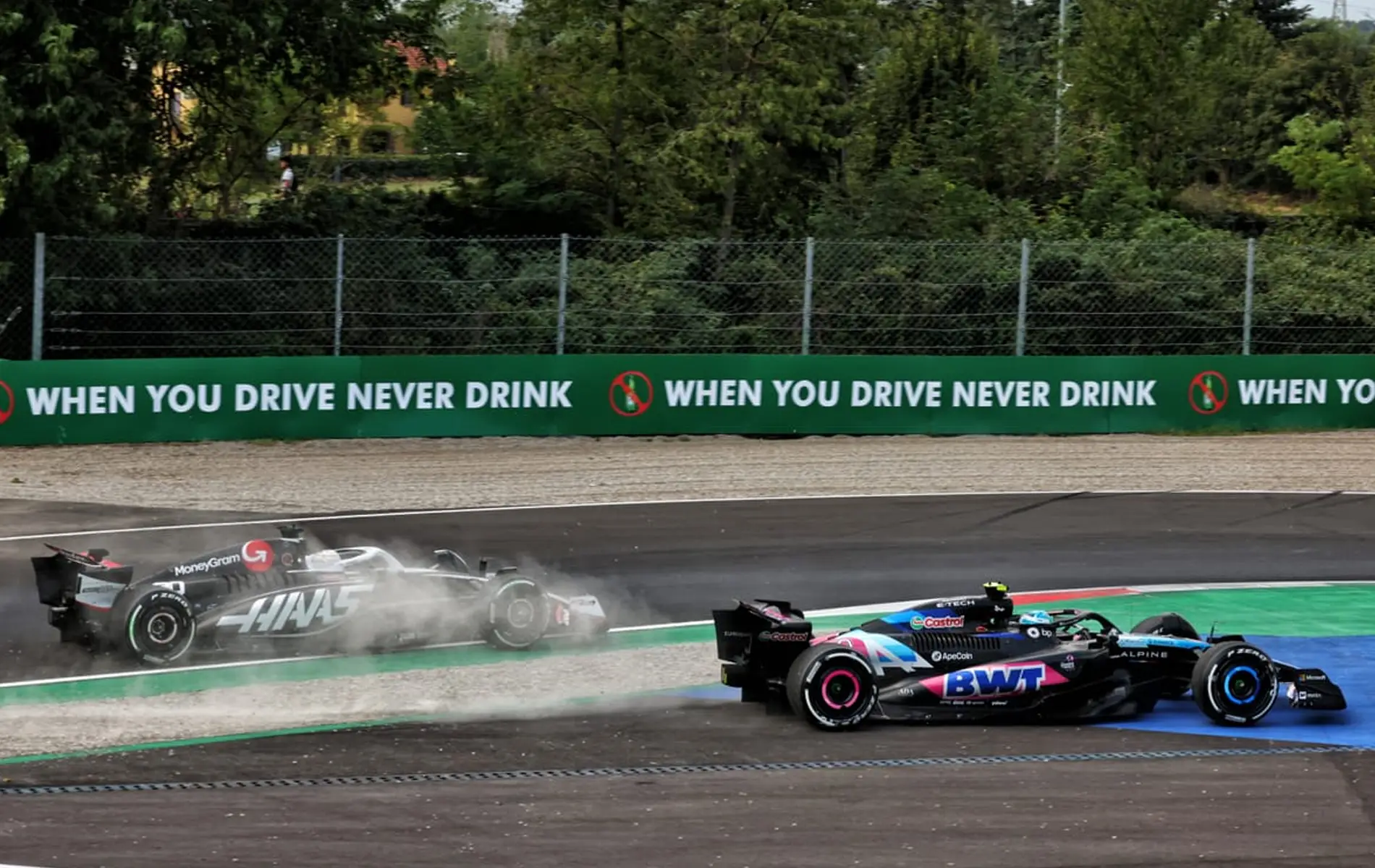
Kevin Magnussen: 2024 Italian Grand Prix
- Ban Type: 1-race ban via superlicence penalty points (first ever under system)
- Reason: Reached 12 penalty points after a crash with Gasly at Monza
- Other incidents: Albon (Saudi), Tsunoda (China), Hamilton (Miami Sprint), Sargeant (Miami GP)
- Replacement: Oliver Bearman at 2024 Azerbaijan GP
Kevin Magnussen made history in 2024—but not the kind any F1 driver hopes for. The Haas veteran became the first driver in the modern penalty points era to receive a race ban after reaching the maximum limit of 12 points on his super licence. The final blow came at the 2024 Italian Grand Prix, where an ambitious move on Pierre Gasly ended in contact—and controversy.
Full Race Report
The incident took place at Turn 4 in Monza, where Magnussen dove down the inside of Gasly’s Alpine but locked up and slid into the Frenchman. Stewards ruled the Dane was “wholly to blame” and had failed to execute a “safe and controlled” overtake. He received a 10-second penalty and two crucial penalty points, tipping him over the limit. Gasly, however, was quick to defend his rival, saying the contact was minimal and calling the ban “unfair” and simply “wheel-to-wheel racing.”
Magnussen didn’t hold back either, arguing that the penalty “makes zero sense,” especially since neither car sustained major damage and both drivers continued in the race. But under the FIA’s strict points-based system, context didn’t matter—12 points in a 12-month period meant a mandatory one-race suspension, making Magnussen the first to fall foul of the rule since its introduction in 2014.
The other 10 points had come steadily throughout the season: three for a collision with Alex Albon in Saudi Arabia, two more after hitting Yuki Tsunoda in China, another three for repeatedly leaving the track in a fierce Miami Sprint battle with Lewis Hamilton, and two for a separate clash with Logan Sargeant during the Miami Grand Prix. The accumulation told a story of aggression unchecked—and by the time the Italian Grand Prix wrapped, Magnussen’s fate was sealed. Rookie Oliver Bearman filled in for the 2024 Azerbaijan Grand Prix, while the Dane watched from the sidelines, a hard lesson served up by consistency in the FIA’s rulebook.
Who was the F1 driver that went to jail?
Race bans are one thing—jail time is another. In one of F1’s most unexpected twists, Bertrand Gachot’s 1991 season came to a sudden halt not because of a crash or penalty, but because of a prison sentence. The Belgian-French driver, fresh off a win at the prestigious 24 Hours of Le Mans, was sentenced to 18 months in jail for an aggravated assault that had occurred the previous December.
The incident involved a London taxi driver, with Gachot accused of using CS gas—an illegal self-defence spray in the UK—during a heated altercation. Though the context was debated, the courts ruled against him, and he was imprisoned just as his Formula 1 career was gaining momentum with Jordan. He ended up serving two months of his sentence.
The timing of his absence proved fateful. With Gachot behind bars, Jordan needed a last-minute replacement for the 1991 Belgian Grand Prix—and gave the seat to a young German named Michael Schumacher. The rest, as they say, is history.
Gachot’s case remains the only example of an active F1 driver missing races due to a custodial sentence, and it stands out as a unique and bizarre footnote in the sport’s long history of drama on—and off—the track.
Seen in:

